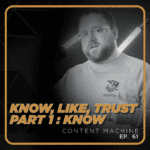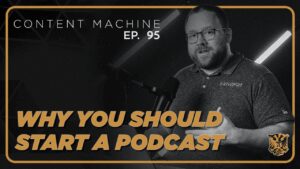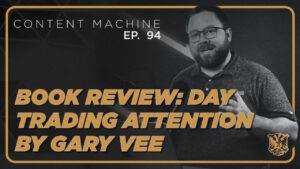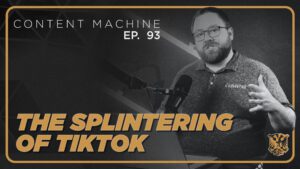
When thinking about the customer acquisition journey, it can sometimes be a mystery how people decided to do business with you. Sometimes people describe it as a funnel. The more people hear about you, the more it’ll filter down to the people who turn into customers. And that’s a pretty good model. But a slightly different take on that, and a bit more of a relational take, is the know, like, and trust model. The know in the know, like, trust model means for someone to do business with you, they have to know who you are, they have to decide that they like you, and ultimately, they have to decide to trust you. Once they’ve decided they trust you, they will be willing to sign on the dotted line. This week we’re going to talk about the know, and then in future weeks, we’ll talk about like and trust. In the know like trust model, what does it mean to know? Very simply, it’s I know who you are or that you exist. So how do we become known? Two big thoughts, inbound and outbound marketing. Let’s start with outbound. Outbound marketing is anything that you are doing to actively get your name out there.
That might be sponsoring a local event, buying digital ads, or having a logo on the side of your truck. Outbound marketing is great for introducing yourself to people that might not know who you are or bringing you back to the top of people’s minds. Inbound marketing is when people come looking for you. It’s the experience they have on your website. It’s the content they see on your Facebook page when they come and look for you. I call inbound marketing being ready to be found. The biggest way inbound works into the no category is through things like social media and having good search engine results. We’ll talk more about inbound marketing when we talk about getting someone to like and trust you. But for now, know that if you invest in outbound marketing but do not have inbound ready to go, you are wasting your money. You have to be ready to be found, which is where steps between know and like start to bleed over. So what should we think about for outbound? One, audience, two, cost, three, brand image. When we think about audiences, we need to consider, are these the people we want to talk to?
So who do you want to talk to? Are they potential customers or are they referrers of potential customers? Are they just general potential customers? Or are they the target market that you really want to develop? Cost. Can you afford to do this? What do you think the ROI will be? Is it a one-time expense or an ongoing expense? Spending $1,000 to talk to 10 of the right people might make a ton of sense for your business. Spending the money to wrap your van might make sense, too. The cost varies by the audience and your business goals. And then finally, does this opportunity fit your brand? Even if an opportunity is with potential customers and affordable, does it make sense to align yourselves with that opportunity? This question could mean a variety of things for your brand, but things like the type of the event, the cause of the organization, or the message that the platform carries could have an effect. An example of this would be Adelsberger Marketing advertising in a traditional print newspaper. It would be an odd place to see us for a number of reasons, and it wouldn’t be a good fit.
We’ll talk more about know, like and trust in upcoming weeks. And so you need to ask yourself, are you ready to be found? Are you ready to start that relationship with a new customer? If not, send me an email at kevin@adelsbergermarketing.com and subscribe for future episodes of the Content Machine podcast.





